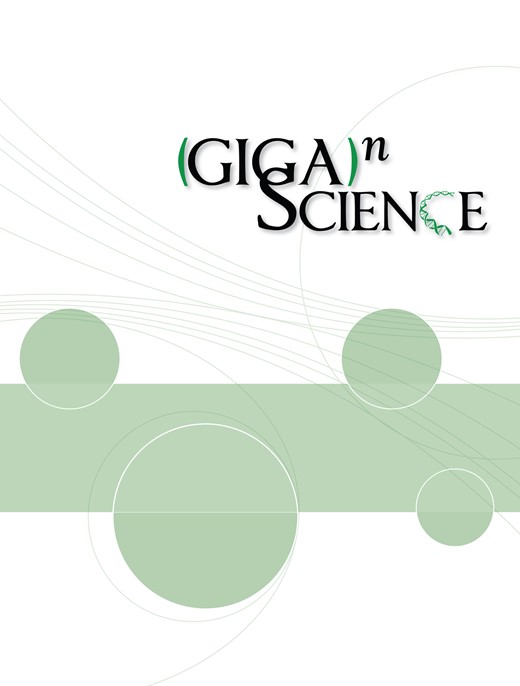打包为 FAIR 数字对象的多组学数据分析工作流程
IF 11.8
2区 生物学
Q1 MULTIDISCIPLINARY SCIENCES
引用次数: 0
摘要
背景 在研究项目中应用良好的数据管理和 FAIR(可查找、可访问、可互操作和可重用)数据原则,有助于在未来的研究中将知识发现、研究结果可重现性和数据重用区分开来。基于最初的研究数据 FAIR 原则的概念,最近又提出了研究软件 FAIR 原则。FAIR 数字对象可以实现研究对象的发现和重用,包括人类和机器的计算工作流程。实际案例有助于促进研究界在计算工作流程中采用 FAIR 实践。我们开发了一个多组学数据分析工作流,将其作为 FAIR 数字对象进行共享。研究结果 我们进行了一项案例研究,调查多组学数据与儿童外化行为之间的共享模式。分析工作流在工作流管理器 Nextflow 中以模块化流水线的形式实现,包括具有软件依赖性的容器。我们遵守了软件开发规范,如版本控制、文档和许可。最后,我们用丰富的语义元数据对工作流进行了描述,将其打包为研究对象板块(Research Object Crate),并通过 WorkflowHub 进行共享。结论 除了打包的多组学数据分析工作流程,我们还分享了采用各种 FAIR 实践和创建 FAIR 数字对象的经验。我们希望我们的经验能够帮助其他开发 omics 数据分析工作流程的研究人员将 FAIR 原则付诸实践。本文章由计算机程序翻译,如有差异,请以英文原文为准。
A multi-omics data analysis workflow packaged as a FAIR Digital Object
Background Applying good data management and FAIR (Findable, Accessible, Interoperable, and Reusable) data principles in research projects can help disentangle knowledge discovery, study result reproducibility, and data reuse in future studies. Based on the concepts of the original FAIR principles for research data, FAIR principles for research software were recently proposed. FAIR Digital Objects enable discovery and reuse of Research Objects, including computational workflows for both humans and machines. Practical examples can help promote the adoption of FAIR practices for computational workflows in the research community. We developed a multi-omics data analysis workflow implementing FAIR practices to share it as a FAIR Digital Object. Findings We conducted a case study investigating shared patterns between multi-omics data and childhood externalizing behavior. The analysis workflow was implemented as a modular pipeline in the workflow manager Nextflow, including containers with software dependencies. We adhered to software development practices like version control, documentation, and licensing. Finally, the workflow was described with rich semantic metadata, packaged as a Research Object Crate, and shared via WorkflowHub. Conclusions Along with the packaged multi-omics data analysis workflow, we share our experiences adopting various FAIR practices and creating a FAIR Digital Object. We hope our experiences can help other researchers who develop omics data analysis workflows to turn FAIR principles into practice.
求助全文
通过发布文献求助,成功后即可免费获取论文全文。
去求助
来源期刊

GigaScience
MULTIDISCIPLINARY SCIENCES-
CiteScore
15.50
自引率
1.10%
发文量
119
审稿时长
1 weeks
期刊介绍:
GigaScience seeks to transform data dissemination and utilization in the life and biomedical sciences. As an online open-access open-data journal, it specializes in publishing "big-data" studies encompassing various fields. Its scope includes not only "omic" type data and the fields of high-throughput biology currently serviced by large public repositories, but also the growing range of more difficult-to-access data, such as imaging, neuroscience, ecology, cohort data, systems biology and other new types of large-scale shareable data.
 求助内容:
求助内容: 应助结果提醒方式:
应助结果提醒方式:


